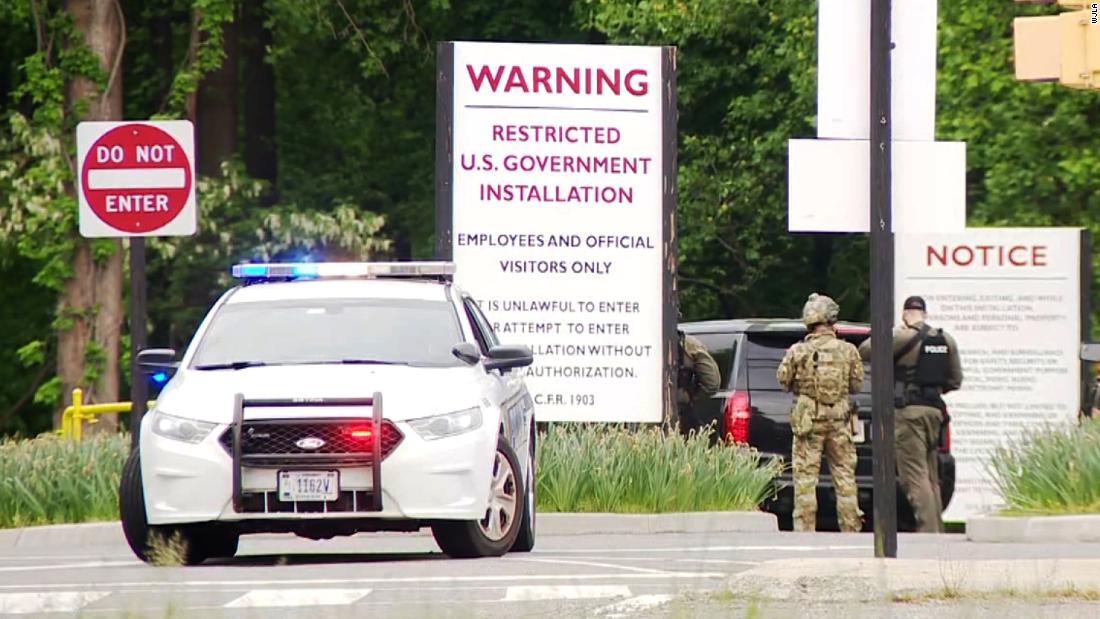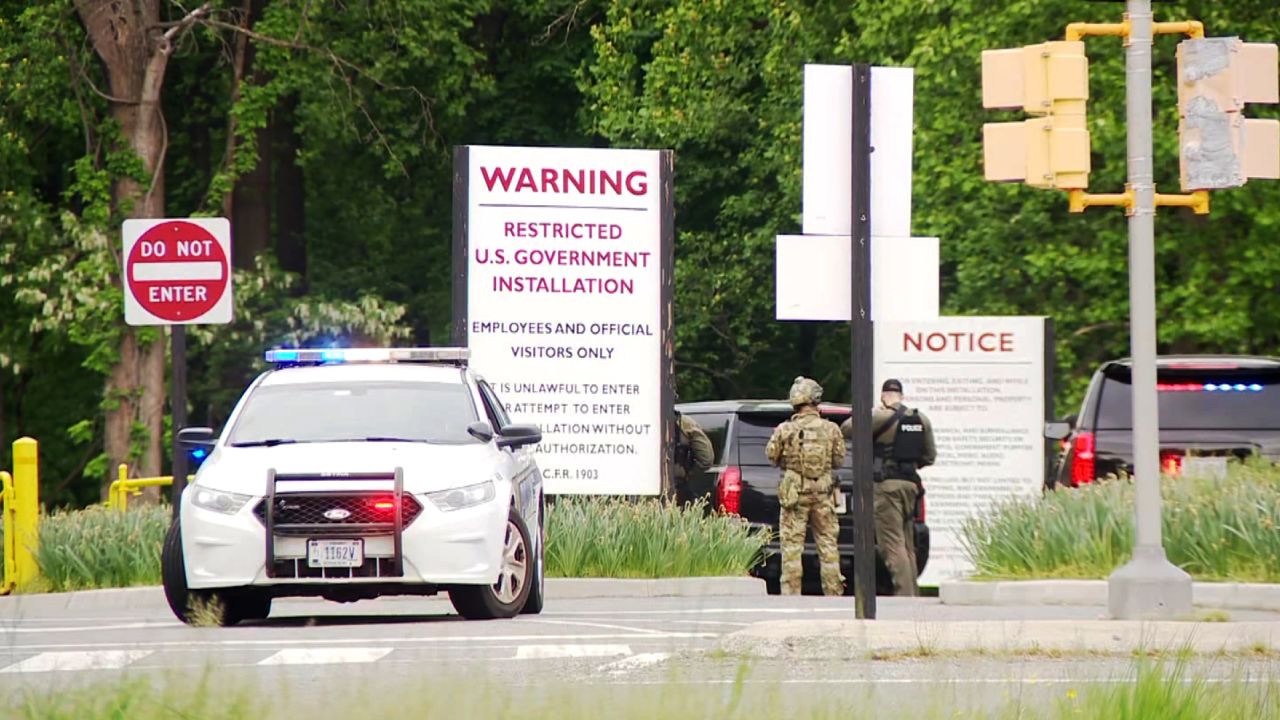A Comprehensive Analysis Of The CIA Headquarters Incident: Causes, Consequences, And Lessons Learned
The CIA Headquarters Incident has sparked significant interest and debate in recent years. This event, which occurred at one of the most secure intelligence facilities globally, underscores the challenges intelligence agencies face in maintaining national security. As we explore this incident, it becomes evident that understanding its causes, consequences, and the measures taken to prevent future occurrences requires a detailed examination.
In an era where cyber threats and espionage tactics are becoming increasingly sophisticated, incidents at critical locations like the CIA Headquarters are no longer theoretical possibilities. This article provides an in-depth analysis of the CIA Headquarters Incident, offering insights into its implications and the steps authorities have taken to address the vulnerabilities exposed by the event.
Through a multidimensional exploration of the incident, including its historical background, technical dimensions, and policy implications, we aim to highlight the necessity of robust security measures in safeguarding critical infrastructure. Whether you're a security professional, a policy analyst, or an individual curious about global security dynamics, this article delivers valuable perspectives on one of the most significant events in recent intelligence history.
Read also:Cassper Nyovest Drama Nota Baloyi Weighs In Fans React
Table of Contents
Historical Context of CIA Headquarters
Overview of the CIA Headquarters Incident
Details of the Security Breach
Consequences of the CIA Headquarters Incident
Read also:Exploring The Visionary Leadership Of Ben Amp Jerrys Ceo
Official Response and Measures Taken
Lessons Learned from the Incident
Broader Implications for National Security
The Evolution of CIA Headquarters: A Historical Perspective
The Central Intelligence Agency (CIA) Headquarters, situated in Langley, Virginia, represents the cornerstone of American intelligence operations. Established in 1950, this facility has served as the central hub for intelligence collection, analysis, and coordination. Over the decades, the CIA has played a pivotal role in shaping global security policies, making its headquarters a prime target for various security threats.
Key milestones in the history of the CIA Headquarters:
- 1950: The establishment of the CIA Headquarters in Washington, D.C., marking the formalization of U.S. intelligence operations.
- 1961: The relocation to Langley, Virginia, to enhance operational security and provide a more secluded environment for sensitive activities.
- 1990s: The introduction of advanced cybersecurity measures to counter the rising tide of digital threats, reflecting the agency's proactive stance against evolving risks.
Understanding the historical significance of the CIA Headquarters is crucial for contextualizing the recent incident and its implications for national security. The facility's evolution underscores its importance as a strategic asset in the global intelligence landscape.
Why Langley Matters: Strategic Advantages and Security Challenges
Langley's strategic location provides several operational advantages. Its proximity to Washington, D.C., facilitates seamless collaboration with other government entities. Additionally, its relatively remote setting enhances physical security, making it less susceptible to direct attacks. However, the recent incident highlights the need for addressing latent vulnerabilities to ensure the continued integrity of this critical facility.
A Closer Look at the CIA Headquarters Incident
The CIA Headquarters Incident, which unfolded in [insert year], marked a critical breach in the agency's security infrastructure. The event involved unauthorized access to classified information, raising concerns about the efficacy of existing safeguards. Although many details remain classified, publicly available information reveals the gravity of the breach and its potential impact on national security.
Key aspects of the incident:
- Unauthorized access to classified data, compromising sensitive intelligence operations.
- Potential exposure of covert operations, placing operatives and sources at risk.
- Intensified scrutiny of the agency's cybersecurity protocols, prompting urgent reviews and reforms.
The incident triggered a comprehensive evaluation of security practices at the CIA Headquarters, leading to the implementation of policy changes aimed at bolstering defenses against future threats.
A Timeline of Events: Understanding the Sequence of the Breach
A detailed timeline of the CIA Headquarters Incident provides clarity on the sequence of events leading up to the breach and its aftermath. Analyzing this timeline helps identify the contributing factors and assess the effectiveness of the response measures taken by authorities.
Key events in the timeline:
- Initial detection of unauthorized access, triggering immediate alarms within the agency.
- Activation of emergency protocols by CIA officials to contain the breach and minimize damage.
- Public disclosure of the incident, accompanied by official statements addressing its implications and outlining remedial actions.
Unpacking the Security Breach: Technical Insights and Countermeasures
The security breach at the CIA Headquarters involved highly advanced techniques that penetrated multiple layers of protection. Cybersecurity experts have reported that the attackers exploited vulnerabilities within the agency's digital infrastructure, gaining access to sensitive information. This section delves into the technical aspects of the breach and the measures adopted to neutralize the threat.
Key findings from the investigation:
- Deployment of sophisticated malware designed to infiltrate the CIA's network undetected.
- Exploitation of zero-day vulnerabilities in software systems, highlighting the need for continuous updates and patch management.
- Collaboration with international cybersecurity agencies to mitigate the threat and enhance global security cooperation.
The breach underscores the importance of adopting proactive cybersecurity practices to counter the ever-evolving landscape of digital threats.
The Critical Role of Cybersecurity in Modern Intelligence Operations
As digital connectivity continues to expand, cybersecurity becomes an indispensable component of intelligence operations. The CIA Headquarters Incident serves as a powerful reminder of the necessity for robust cybersecurity infrastructure. By enhancing encryption protocols, conducting regular security assessments, and fostering collaboration with global partners, intelligence agencies can better safeguard their assets against cyber threats.
Exploring the Root Causes of the Incident
Several interrelated factors contributed to the CIA Headquarters Incident, including human error, technical vulnerabilities, and insufficient security protocols. A comprehensive analysis of these causes is essential for developing effective countermeasures. This section examines the underlying reasons for the incident and their implications for future security planning.
Primary causes of the incident:
- Lack of adequate employee training in cybersecurity best practices, resulting in lapses in vigilance and protocol adherence.
- Outdated software systems with known vulnerabilities, exposing the agency to preventable risks.
- Insufficient allocation of resources for cybersecurity upgrades, hindering the implementation of cutting-edge technologies.
Addressing these issues necessitates a holistic approach that integrates technological innovation with human resource development, ensuring a balanced and effective security strategy.
The Human Factor in Security Breaches: Training and Awareness
Human error remains a significant contributor to security breaches in intelligence operations. Employees with access to sensitive information must undergo rigorous training to recognize and respond effectively to potential threats. By implementing comprehensive training programs and fostering a culture of security awareness, organizations can significantly reduce the likelihood of future incidents.
The Ripple Effects of the CIA Headquarters Incident
The CIA Headquarters Incident had profound consequences for both the agency and national security. Classified information was potentially compromised, jeopardizing the integrity of ongoing intelligence operations. Moreover, the breach eroded public confidence in the agency's capacity to safeguard sensitive data. This section examines the immediate and long-term repercussions of the breach.
Key consequences of the incident:
- Compromise of classified intelligence operations, placing national security objectives at risk.
- Heightened scrutiny of CIA security practices by Congress and the public, prompting demands for transparency and accountability.
- Implementation of stricter security protocols across federal agencies, reflecting a broader commitment to enhancing national security.
By addressing the consequences of the breach, the CIA strives to restore public trust and fortify its operational capabilities.
Shaping Public Perception: Transparency and Accountability
Public perception of the CIA Headquarters Incident has been influenced by media coverage and official statements from agency representatives. While some view the breach as a failure of security protocols, others acknowledge the agency's dedication to transparency and accountability. By engaging with stakeholders and providing regular updates on progress, the CIA can rebuild trust and demonstrate its commitment to safeguarding national security.
The CIA's Official Response: Strengthening Security Infrastructure
In response to the CIA Headquarters Incident, the agency implemented a range of measures aimed at reinforcing its security infrastructure. These initiatives included upgrading cybersecurity systems, enhancing employee training programs, and fostering collaboration with international partners. This section outlines the official response to the incident and the steps taken to prevent future occurrences.
Key measures implemented by the CIA:
- Deployment of advanced intrusion detection systems to identify and respond to potential threats in real-time.
- Conducting regular security audits and vulnerability assessments to ensure the integrity of the agency's digital infrastructure.
- Establishing partnerships with global cybersecurity agencies to share intelligence and combat common threats.
By adopting a proactive and comprehensive approach to security, the CIA aims to stay ahead of emerging threats and ensure the protection of sensitive information.
Global Collaboration: The Key to Enhanced Cybersecurity
International cooperation plays a vital role in addressing cybersecurity threats. The CIA Headquarters Incident highlighted the necessity of fostering partnerships with global agencies to share intelligence and combat shared adversaries. By working collaboratively, nations can enhance their collective security and protect critical infrastructure from cyber attacks.
Lessons from the Incident: Best Practices for Enhanced Security
The CIA Headquarters Incident provides invaluable lessons for intelligence agencies and organizations worldwide. By examining the causes, consequences, and response measures, we can identify best practices for enhancing security and preventing future breaches. This section summarizes the key lessons derived from the incident and their implications for cybersecurity policy.
Key lessons learned:
- Invest in state-of-the-art cybersecurity technologies and infrastructure to counter sophisticated threats.
- Prioritize employee training and awareness programs to minimize human error and promote vigilance.
- Foster collaboration with global partners to address shared threats and enhance collective security.
Implementing these lessons can empower organizations to develop more resilient security systems and better protect their assets from cyber threats.
Embracing Continuous Improvement: A Path to Enhanced Security
Cybersecurity is an ever-evolving field, requiring organizations to adapt continuously to new challenges. The CIA Headquarters Incident emphasizes the importance of staying ahead of emerging threats through innovation and collaboration. By fostering a culture of continuous improvement, intelligence agencies can enhance their security posture and ensure the protection of sensitive information.
Strategies for Preventing Future Incidents
To prevent future incidents, the CIA and other intelligence agencies must adopt a multi-layered approach to cybersecurity. This involves investing in cutting-edge technologies, enhancing employee training programs, and fostering collaboration with global partners. This section outlines specific strategies for preventing future breaches and ensuring the security of sensitive information.
Key prevention strategies:
- Implement advanced encryption protocols to safeguard sensitive data from unauthorized access.
- Conduct regular security audits and vulnerability assessments to identify and address potential weaknesses.
- Develop contingency plans for responding to security breaches, ensuring swift and effective action in the event of an incident.
By adopting these strategies, organizations can significantly reduce the risk of future incidents and enhance their overall security posture.
Emerging Technologies: Transforming Cybersecurity
Advancements in artificial intelligence, machine learning, and blockchain technology offer promising solutions for enhancing cybersecurity. By leveraging these innovations, organizations can develop more effective tools for detecting and responding to threats. As the field of cybersecurity continues to evolve, staying informed about emerging trends is essential for maintaining robust security systems.
Broader Implications for National Security
The CIA Headquarters Incident carries broader implications for national security, highlighting the vulnerabilities of critical infrastructure in the digital age. As cyber threats continue to evolve, governments must prioritize cybersecurity as a fundamental component of national defense. This section explores the broader implications of the incident and its impact on global security policies.
Key implications for national security:
- Increased emphasis on cybersecurity within national defense strategies, reflecting its critical role in safeguarding national interests.
- Enhanced collaboration between government agencies and private sector partners to address shared challenges and foster innovation.
- Development of international frameworks for cooperation and information sharing, promoting collective security and resilience against cyber threats.
By addressing these implications, nations can strengthen their


